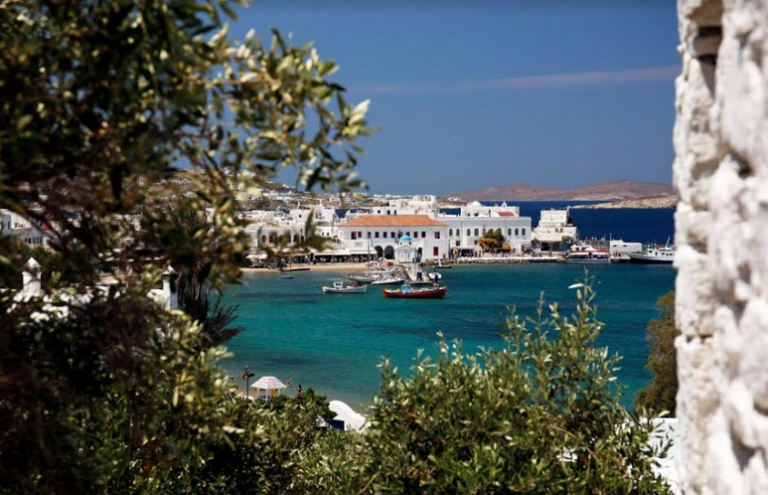From humble origins Mykonos has built itself up to be the pinnacle of Aegean cosmopolitanism. Travelers from all over the globe have long been drawn to the ‘Island of the Winds’ seduced by beautiful beaches, thatched windmills and a picture perfect port town. Today, visitors are most likely attracted by superstar DJ’s, gourmet chefs, beach clubs, luxury hotels and designer boutiques but there is another side to the island with far-flung quiet shores, rugged nature and alluring side streets lined with white houses and flower-filled balconies.
Stroll through Little Venice, salt-blasted by the waves, and look out to the sunset over the famed windmills. Next door on the balconies that hover over the water, Champagne is popped and shots dropped as the night begins. The endless catwalk of Matoyianni entices with bars full of the bright and beautiful who will dance into the dawn. Tomorrow the beach beckons with a swim in clean seas and a long lunch at a lively beach club. This is Mykonos, one of a kind.
Despite its many transformations through the ages, Mykonos has always had a unique aura. A worldwide reputation for toleration and open-mindedness is no coincidence, nor is it an accident; Mykonos has deep roots. The island owes its fame to sacred Delos, birthplace of Apollo and Artemis, that for a thousand years served as the religious and political center of the Aegean. In ancient times, Mykonos, eclipsed by neighbouring Delos, was famously described as the “bordello of Delos”, an epithet that some may care to use today.
Ask me anything
Explore related questions





